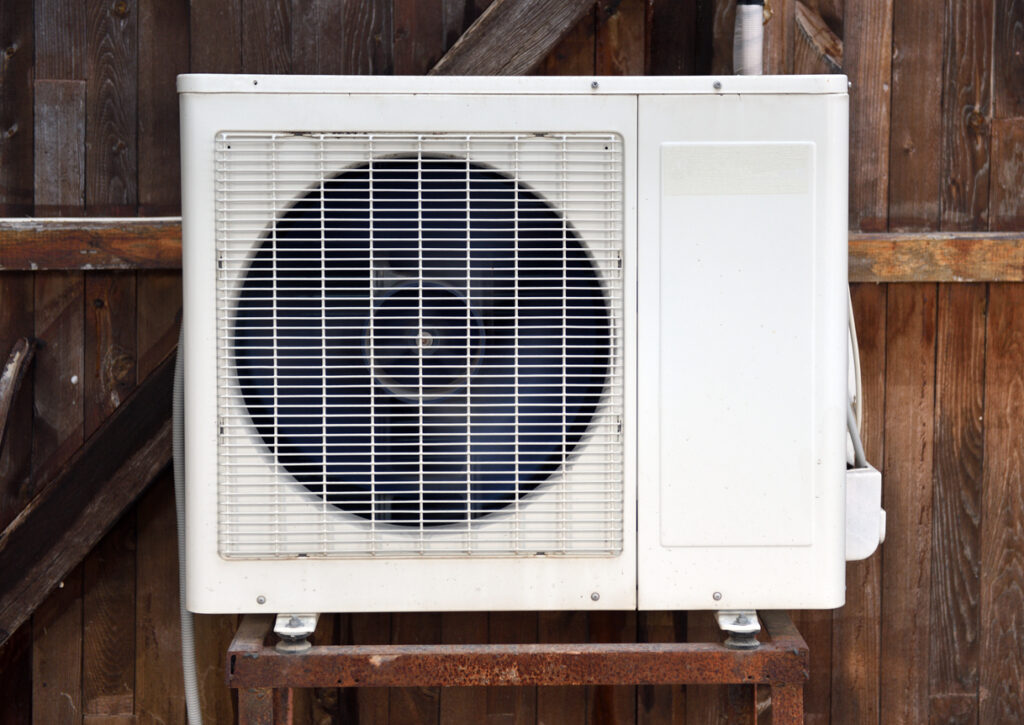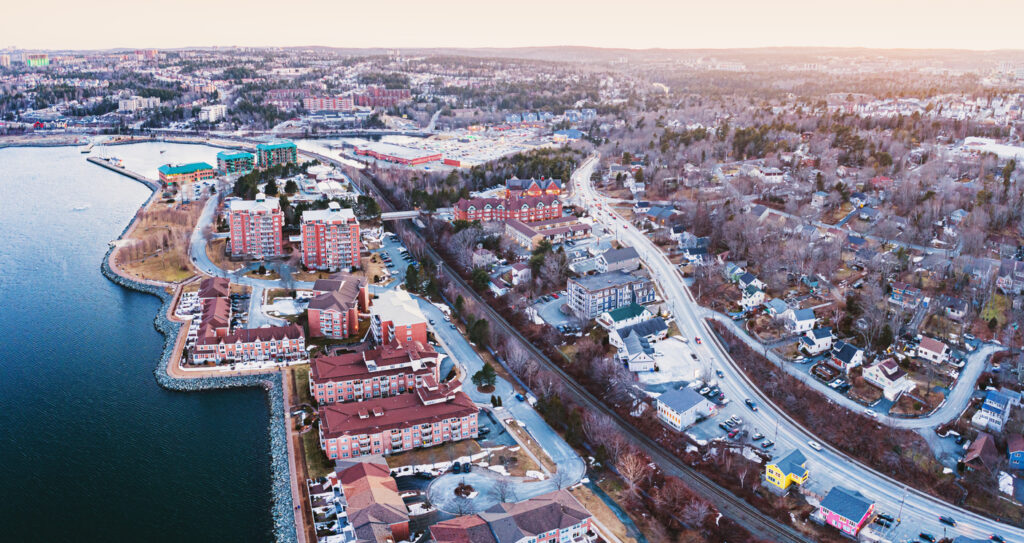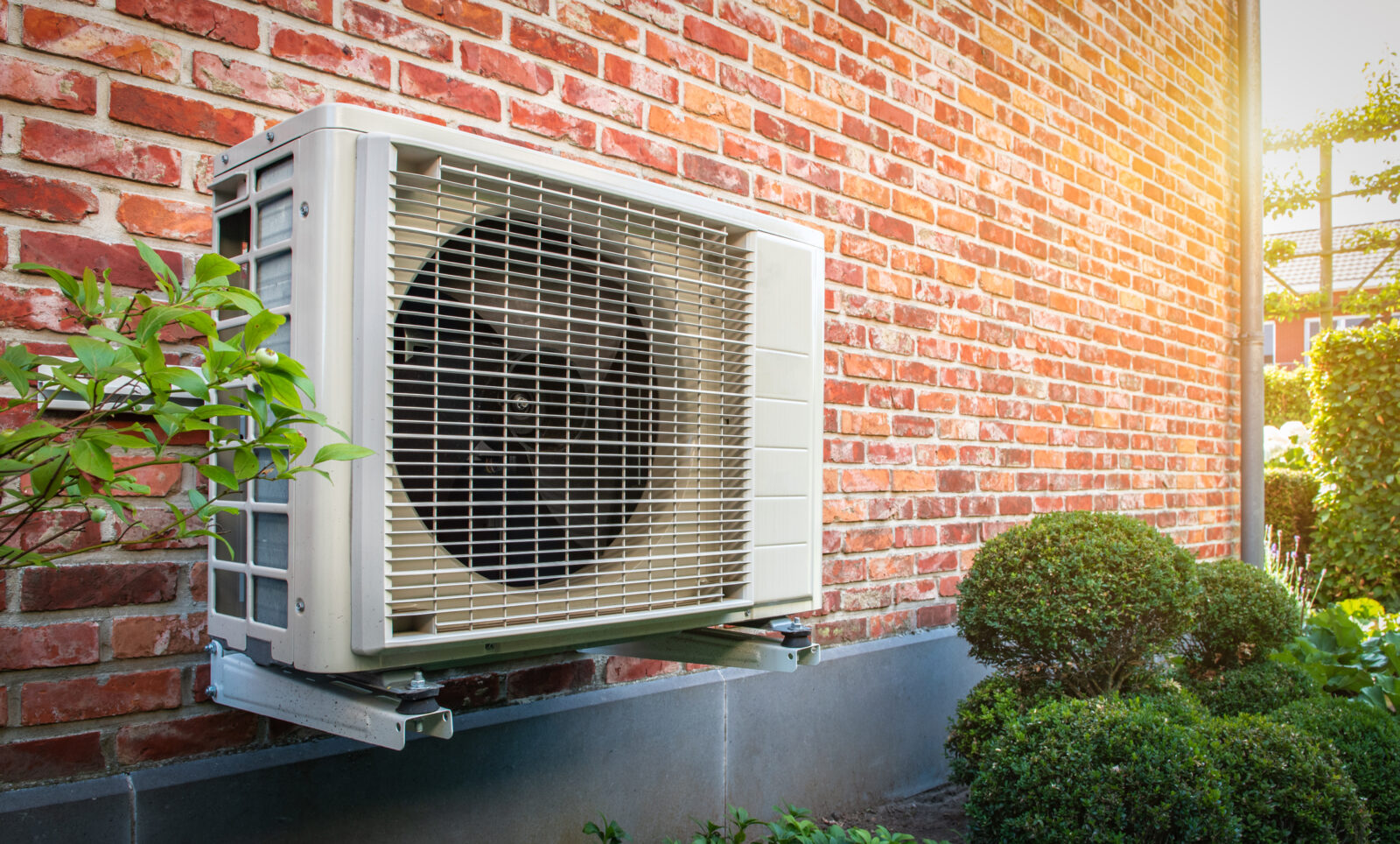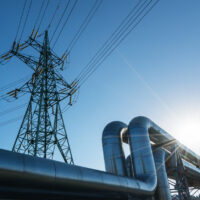The rise of the Maritimes heat pump adoption has been both recent and rapid. Market, policy and social conditions made the Maritimes particularly well suited to the technology.
Introduction
The humble heat pump is so hot right now.
As the global energy transition has gathered momentum worldwide, the importance of electrifying heating and cooling systems has shot up the agendas of governments pursuing more ambitious greenhouse gas emissions targets and net zero goals. As a result, the heat pump has moved with impressive speed from the efficiency-wonk margins to the very centre of energy system planning around the world.
“Heat pumps, powered by low-emissions electricity, are the central technology in the global transition to secure and sustainable heating,” the International Energy Agency announced in its November 2022 technology report The Future of Heat Pumps. Both the UN’s Intergovernmental Panel on Climate Change and the prominent global consulting firm McKinsey have echoed this endorsement. And with Russia’s invasion of Ukraine highlighting Europe’s dependence on Russian natural gas, sales of heat pumps have shot up across the continent, with sales increasing by as much as twofold in some European countries in the first half of 2022 compared to the same period in 2021.
So why have heat pumps attracted such hype? To begin with, because indoor heating is a significant wedge of the world’s contribution to the climate crisis—the IEA estimates that 10 per cent of global carbon dioxide emissions come from heating buildings—and heat pumps are often emissions-free and much more energy efficient than both fossil-fuel-generated and electric baseboard space heating. As the Canadian Climate Institute noted in a 2022 report, “Heat pumps are critical to Canada’s energy transition for several reasons. Heat pumps run on electricity, rather than fossil fuels, making them an important tool in Canada’s big switch to clean electricity. They also use up to 70 per cent less energy than conventional home heating technologies, promising savings for homeowners and renters.”
Worldwide, one-sixth of the natural gas burned each year is for heating, a share that rises to one-third in Europe, where the European Union is the global pacesetter for heat pump market growth. But there have also been substantial spikes in heat pump demand in North America, Japan, Korea and China as well. Heat pumps now account for 10 per cent of the world’s building heating, with the largest shares in Norway (where 60 per cent of buildings are equipped with heat pumps), Sweden and Finland (where the share is more than 40 per cent). Canada does not yet rank among the world’s leaders in heat pump adoption, despite its frigid winters and abundance of clean electricity (more than 80 per cent of the country’s electricity is emissions-free). Only 6 per cent of residential heating across Canada is currently drawn from heat pumps.
But there is one notable exception—an anomaly that is the focus of this report. In three Maritime provinces, heat pumps are already the primary heating source in more than 20 per cent of households. New Brunswick leads the way at 32 per cent, followed by Prince Edward Island at 27 per cent and Nova Scotia at 21 per cent. And those shares are growing much faster than any other primary heating source in the region—in Nova Scotia, for example, heat pump use has expanded from 6 per cent to 21 per cent of households since 2013.
As the rest of Canada looks to accelerate the electrification of its heating systems, this Maritimes anomaly merits closer inspection. How did the Maritime provinces become Canada’s heat pump vanguard? What conditions, policies and market forces have driven that increased uptake, and what lessons can they provide about how to drive heat pump adoption across the country? There is limited data and analysis to build on, but this report has drawn on what little there is, along with interviews with provincial government and utility officials who have developed these pacesetting programs, to provide a baseline snapshot of the Maritimes’ heat pump success story and some lessons for policymakers.
There follows a brief overview of the technology itself and a sketch of global policy and market trends, followed by a more in-depth look at the policy tools, market forces and social conditions that have driven Maritime Canada’s emergence in heat pump adoption.
Heat pumps 101
There are a number of different types and a wide range of brands in the heat pump market, but all operate on roughly the same principles. Heat pumps are essentially heat exchange systems that absorb heat from one space and transfer it to another. Air-conditioners operate on this basic technology, but heat pumps simply allow for this process to operate in either direction—in addition to interior cooling, heat pumps can absorb heat from even cold outdoor air and transfer it to indoor spaces.

In the Canadian marketplace today, the most common heat pump systems are central air-source heat pumps, ductless mini-split heat pumps (“mini-splits”), and ground-source heat pumps. Air-source heat pumps operate by principles similar to other central heating and cooling systems—the heat pump draws in heat from outside to a central unit, which then pushes heat to the rest of the interior through heating ducts. The process also works in reverse, pumping heat from inside a building to the outside world to cool the space. Mini-splits are also a kind of air-source heat pump, but they are better suited to buildings that do not already have duct systems installed. Instead, they carry heat through a coolant system to and from “indoor head” units mounted in each room. Ground-source heat pumps are technologically very similar to air-source versions, but they draw heat from below the earth’s surface instead of the air.
Although heat pump systems of all types can be scaled to meet the heating needs of virtually any building size or type, it remains common in Canada for heat pumps to be paired with a backup—often a pre-existing boiler or electric baseboard system (this is the most common approach in the Maritime provinces to date). A new generation of cold-climate heat pumps, introduced into the marketplace over the last five to ten years, can operate efficiently at temperatures as low as -25C without back-up systems and are much better suited to Canadian winters.
The playing field
Global trends
The heat pump boom is global in scope: sales rose by 15 per cent worldwide in 2021 and continue to accelerate. Europe is leading the charge, with European Union countries alone installing two million units in 2021—an annual increase of 34 per cent—and then installing more than three million more in 2022, a further year-on-year increase of 40 per cent. The European boom predates Russia’s invasion of Ukraine but the task has now acquired much greater urgency.
Heat pumps were also specifically targeted for substantial incentives in the U.S. Inflation Reduction Act, which offers rebates to low- and middle-income households, as well as substantial tax credits.
Canadian trends
In Canada, heat pump adoption has been more sporadic and regional, but both federal and provincial emissions reduction and electrification plans assume a much more substantial role for heat pumps in the years ahead.
As the Canadian Climate Institute reported in 2022, “The number of heat pumps installed in Canadian homes has risen steadily from 400,000 to 850,000 over the last 15 years. However, in the same period, the share of home heating provided by heat pumps has only risen from roughly four to six per cent. To hit projections under the Emissions Reduction Plan, their share of total heating load will need to double in the next eight years, to more than 10 per cent of home heating provided by heat pumps.” Doing so will require targeted policies that send clear signals to markets and consumers across Canada.
Some of these signals are already beginning to be put in place. Both the City of Vancouver and the province of Quebec have introduced partial bans on fossil-fuel heating systems—Vancouver for all new and replacement installations starting in 2025, Quebec for all new construction by the end of 2023. The most recent data on installations, meanwhile, found that, as of 2018, nearly 80 per cent of Canada’s heat pumps were operating in the two most populous provinces, Quebec and Ontario, although proportionally heat pumps accounted for less than 10 per cent of heating systems overall. (By 2021, heat pumps were the primary heating systems in 11 per cent of Quebec households and two per cent of those in Ontario.) During the same period, though, a new trend has emerged: the Maritimes anomaly. The pacesetting installation rates in New Brunswick, Nova Scotia and Prince Edward Island provide the clearest picture of how to rapidly accelerate the adoption of heat pump use in Canada. Let’s examine that picture more closely.
The Maritimes Anomaly
Origins and background
The rise of the Maritimes anomaly in heat pump adoption has been both recent and rapid. In New Brunswick, heat pumps were the primary heating source in 17 per cent of households in 2017; by 2021, that number had increased to 32 per cent of all New Brunswick residences. In Nova Scotia, the share increased from 14 per cent in 2017 to 21 per cent in 2021. And in Prince Edward Island, most dramatically of all, heat pump installations rose from just 9 per cent of households in 2017 to 27 per cent in 2021.)
Although the region’s emergence as a heat pump pacesetter was far from inevitable, there were market, policy and social conditions in the Maritimes that made it particularly well suited to the technology. Energy poverty (the prevalence of households and communities facing major financial challenges to meeting their home energy needs) was very high—at least twice as common across the region as the Canadian average, according to the federal government. The Maritime provinces also have a climate well suited to heat pumps, even older models that were not specifically designed for cold climates; the moderating influence of the Atlantic Ocean means the region rarely faces conditions of extreme cold. And the most common household heating technologies—oil-burning furnaces and electric baseboards—each have qualities that make replacing them with heat pumps either enticing or relatively uncomplicated. In the case of heating oil, predominant in Nova Scotia and P.E.I., prices are volatile. In the case of electric baseboards, predominant in New Brunswick, large electrical panels already exist in a typical homes and can be adapted for heat pump systems without significant new wiring or costly upgrades.
Equally important for the recent heat pump boom was an institutional commitment to energy efficiency in general that predated the focus on heat pumps in particular. New Brunswick has operated efficiency programs—now gathered under the banner of its climate change secretariat—without interruption since 2008. P.E.I.’s efficiency office (later named efficiencyPEI) was also established in 2008. And in Nova Scotia, the provincial government established its arm’s-length efficiency agency, Efficiency Nova Scotia (now called EfficiencyOne) in 2010.
These efficiency offices and programs were enormously helpful in the recent push for heat pump installations. They provided consistency and continuity in the face of periodic changes in government. And because they already delivered a variety of audits, programs and incentives for a range of household energy efficiency measures, they established strong, lasting relationships with residents, local heating system contractors, regulators and utilities. The New Brunswick government, for example, already had an identified list of certified installers before it ramped up its heat pump programs, and efficiencyPEI leads the country in household energy audits per capita. Put simply, governments in all three provinces were already experienced in delivering energy efficiency programs in advance of the heat pump boom, and utilities, regulators, contractors and households alike had already been engaged with consistency and stability in making home energy efficiency improvements to some degree. As one provincial official put it, a “strong culture” had emerged around efficiency in the region in advance of targeted heat pump policies.
The heat pump boom: incentives matter
In all three Maritime provinces, strong financial incentives in the form of grants and rebates provided the main catalysts for the dramatic recent increases in heat pump installations. Although energy efficiency in general had been incentivized across the region as far back as Natural Resources Canada’s first home efficiency retrofit programs, launched in 2007, direct incentives specifically for heat pumps were introduced much more recently.
The region’s first significant targeted incentives quickly demonstrated the strong demand for heat pumps in the region. NB Power, New Brunswick’s primary utility, introduced a $500 rebate on mini-split heat pumps in 2015. Approximately 13,000 households signed up in the first year, at which point the incentive was deemed a success beyond its initial intent and scaled down. In 2017, NB Power launched its Total Home Energy Savings program, which offered grants of up to $4,000 for a range of efficiency upgrades, including heat pumps. Nova Scotia’s EfficiencyOne introduced similar efficiency grants the same year. Heat pump adoption has been rapid and steady in both provinces since. P.E.I. introduced its first direct incentives for heat pumps in 2021, offering free systems to households living below an income threshold of $35,000 per year. The program has since increased the threshold to $55,000 and then $75,000. Heat pump adoption in all three provinces expanded rapidly in response.
In all three provinces, provincial incentives have since been “stacked” with federal programs to further boost adoption rates, particularly after the introduction of the Canada Greener Homes program in 2020, which provided grants of up to $5,000 to install heat pumps, and the 2022 Oil to Heat Pump Affordability (OHPA) program, which provided $5,000 rebates on heat pumps for households relying on oil-burning furnaces (which are the most common systems in both Nova Scotia and P.E.I.). The new OHPA grants piggyback on Nova Scotia’s $5,000 EfficiencyOne rebates, while New Brunswick, where very few households rely on oil-burning furnaces, now offers free mini-split systems to households with annual incomes below $70,000 through its Enhanced Energy Savings Program (a partnership of the provincial government and NB Power).
Lessons from the Maritimes anomaly
The most straightforward lesson from the Maritimes anomaly is there is no substitute for strong incentives, especially if they are targeted at lower income households, for whom the upfront-cost barrier of heat pump systems is particularly daunting. Money alone, though, is not the path to success. In all three provinces, heat pump incentives were packaged with or introduced alongside other efficiency measures. Conducting thorough energy audits not only identified households that would benefit the most from switching to a heat pump, it also established relationships between government agencies and residents. Offering rebates on insulation and other energy saving initiatives alongside the heat pump rebates has helped ensure that the systems work effectively once installed—offering cost savings to residents and leaving customers satisfied with the new heating systems.

The importance of clear communications has also been cited by officials in all three provinces as a crucial component. In some jurisdictions, the savings heat pumps provide can be readily apparent—in New Brunswick, for example, where most households are served by NB Power for all their energy needs, the savings on energy bills was mostly self-evident. Customers switching from a semi-annual heating oil delivery bill to an increased monthly electricity bill, however, benefit from having the savings explained more clearly.
More broadly, the switch from a tried-and-true heating source to a new and unfamiliar one is a major decision for a Canadian household. The behavioural psychology on making this kind of change is unequivocal—most people tend to overvalue the systems they have compared to a new approach (a phenomenon known as the “endowment effect”) and tend to resist becoming early adopters (due to status quo bias and numerous other common aversions to taking risks). Any obstacle or unanticipated issue along the way can discourage wider adoption of the technology.
The Maritimes anomaly offers examples of both effective communications and communications oversights, all of which are instructive.
On the effective side, all three provinces appear to have done well at identifying reliable suppliers and installers and explaining the obvious benefits of free or heavily rebated heat pumps. Though these measures did not entirely eliminate the problem of unscrupulous contractors installing systems that were insufficient to the task (as noted below), they significantly reduced the prevalence of dissatisfied customers.
In the case of New Brunswick, the heat pump rollout has been so effective that installers themselves are taking up part of the task—for example, offering their own financing packages and seasonal discounts on top of the rebates and grants. And in Nova Scotia, the introduction of heat pumps amid often-skyrocketing oil prices has led to prospective landlords prominently touting heat pumps as a beneficial feature of rental properties. The warming climate has assisted as well—in a region where very few households felt the need for air-conditioners historically, the heat pump’s added feature of interior cooling is beginning to prove attractive. (In warmer parts of the country, this aspect of the sales pitch will likely prove even more enticing.)
There were, however, some significant errors and oversights, which varied from province to province. One common issue was the emergence of unreliable, “fly-by-night” installers eager to take advantage of the generous incentives. Officials in every province emphasized the importance of identifying reliable installers and providing better oversight—adding performance and installation standards to the building codes was one repeated recommendation. All as well pointed out that they could have put more effort into consolidating and streamlining the application and installation process—in P.E.I., for example, the most recent changes to the minimum income threshold for free heat pump systems generated instant demand that quickly overwhelmed their office’s ability to respond, an oversight they have had to scramble to correct. The current list of approved applications waiting for installations numbers in the thousands. And officials in New Brunswick noted that more effort could have been made to explain the costs and requirements of routine maintenance.
Conclusion
Given the range of federal and provincial measures now in place across Canada to reduce greenhouse gas emissions, improve energy efficiency in buildings, and electrify space heating, the Maritimes anomaly will likely soon seem more like a headstart than an outlier. New Brunswick, Nova Scotia and P.E.I. have accelerated their adoption of the technology first, but it is expected to become a commonplace heating system coast to coast to coast, as either a stand-alone option or one that is supported by more traditional heating systems. The new generation of cold-climate heat pumps, which can operate efficiently without backup in all but the most ferocious of Canadian cold snaps, should further assist in making the case for the viability of the technology across the country. In the meantime, their progress provides a strong model.
Overall, heat pumps have become an easy sell in the Maritime provinces thanks to a mix of the limits of existing technologies, the self-evident benefits they offer, the effectiveness of well-designed, easily accessed incentive programs, the amplifying effects of positive word-of-mouth, and the well-established appeal of deep discounts through government incentives. The rest of Canada would do well to learn from their successes and mistakes—and follow their lead.
Acknowledgements
The author would like to thank the following interview subjects and other experts for their time and expertise in assisting with this report: Peter T. Craig at EfficiencyOne (Nova Scotia); Jeff Hoyt and Susan Atkinson at the Government of New Brunswick; Beth Pollack at N.B. Power; Angela Banks, Brittany Ziegler and Erin Kielly at the Government of Prince Edward Island; Leslie Malone at Dunsky Energy; and Sachi Gibson, Jonathan Arnold, Jason Dion and Kate Harland at the Canadian Climate Institute.
This report also draws on background information, analysis and data found in the following publications:
“The Future of Heat Pumps” (International Energy Agency, November 2022)
“Heating and Cooling Strategies in the Clean Energy Transition” (International Energy Agency/National Energy Board, May 2019)
Anna Kanduth, “Heat pumps can power major emissions reductions from buildings” (Canadian Climate Institute, 17 November 2022)
“Market Snapshot: Steady growth for heat pump technology” (Canadian Energy Regulator, 21 February 2018)
“Market Snapshot: Growing heat pump adoption – how does the technology work?” (Canadian Energy Regulator, 17 April 2019)


